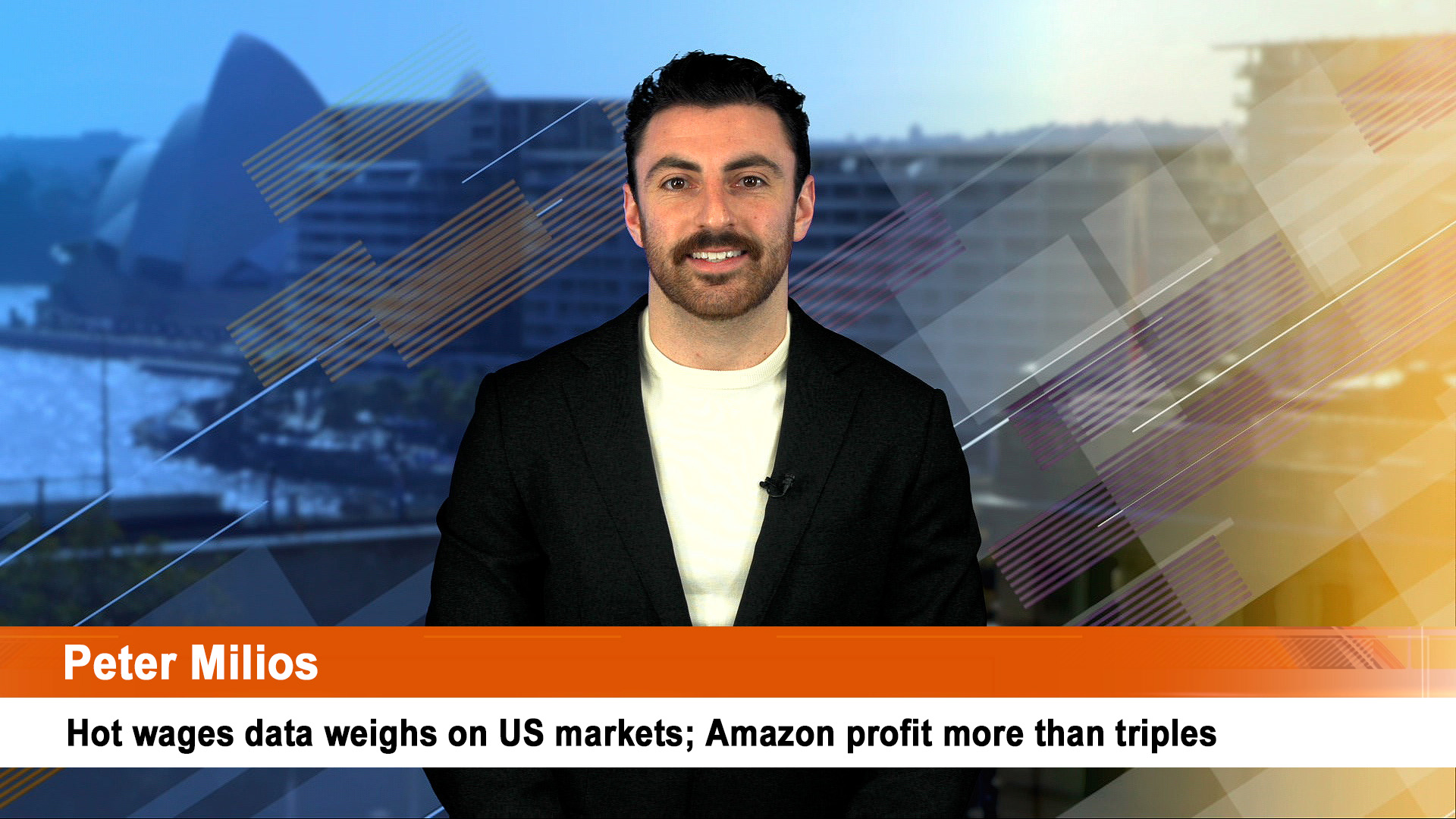Global stocks suffered their biggest declines in more than a year last week as heavy losses in Netflix shares on Friday accentuated a sell-off in tech stocks that has spilled into other sectors.
After falling for a fourth day in a row on Friday, Wall Street suffered its worst week in nearly two years, and so far in January the key S&P 500 is off to its worst start since 2016.
Technology stocks have been hit especially hard, with the Nasdaq Composite Index down more than 15% from its most recent high in November and well in truly in a correction. Half that fall came last week.
Crypto currencies were also slammed with Bitcoin falling under $US35,000 on the weekend to be down nearly 15% in two days.
The Nasdaq Composite was hit the hardest with Friday’s selling sending the tech-heavy index to its worst week since 2020 as it declined 2.7% to 13,768.92. The Dow lost 1.3% or 450.02 points to 34,265.37. The S&P 500 slid 1.9% to 4,397.94.
The Nasdaq posted a 7.6% loss for the week, its worst since October 2020, and now sits more than 15% below its November record close.
Both the Dow and S&P 500 closed out their third straight week of losses and their worst weeks since 2020. The S&P 500 is off 8.7% from its most recent record close on January 4and lost 5.68% for the week. The Dow shed 4.58% last week.
For the week Eurozone shares fell 1.6%, Japanese shares fell 2.1% but Chinese shares rose 1% after two rate cuts confirmed the Xi government is now very worried about the slide in economic activity and especially in property – as well as worried out of their brains by the continuing upsurges in small Covid outbreaks.
Gold rose over the week but ended lower on Friday. Oil though ended with another weak of solid gains but saw a late weakness that could be continued in trading Monday. Copper and silver also fell on Friday but gained for the week.
All this before the first meeting for 2022 of the US Federal Reserve which more and more analysts and economists think will reveal the first rate rise in years early Thursday morning, Sydney time.
The ASX 200 is heading for another slide when trading resumes Monday after last week’s big sell off which saw the market hit lows not seen for 8 months.
Overnight trading Friday left the SPI down 49 points which means a very weak start today.
Friday saw the ASX 200 Index slump 166.60 points, or 2.3%, to 7,175.80, to be down 2.95% for the week and 3.61% so far in 2022.
The materials sector led the losses losing 3.5% (with BHP and Rio Tinto falling heavily). This was followed by energy shares, which fell 3%.
Confusion about the short-term impact on market values and levels from the re-unification of BHP Group’s listing to the ASX caused much of Friday’s weakness.
That saw BHP shares fall nearly 5% on Friday and the company’s UK and Australian investors approved plans to scrap BHP’s dual listing in favour of a unified listing on the Australian Securities Exchange.
And adding to the selloff were Rio Tinto shares, which fell 4% after Serbia revoked the miner’s lithium exploration licenses, citing environmental grounds.
Newcrest Mining saw shareholders in Canadian gold miner, Pretium Resources, approve the Australian company’s $3.7 billion takeover offer.
The change of heart about the dangers of inflation in Fed thinking, especially chair Jay Powell and the slow realisation of this week’s meeting saw disarray spread in bond markets.
Yields have risen sharply to above 1.81% for the 10-year US treasury and above 1% for the two-year bond which tells us bond markets see up to for quick rate rises from the Fed.
Covid omicron, inflation, supply chain disruptions, mixed employment news (US short-term claims have started rising in the past couple of weeks or months of falls) and the rotational switch out of tech and growth stocks to value shares (such as most of the Dow), have confused traders and undermined confidence.
Netflix undermined the growth/tech narrative with a surprisingly weak first quarter subscriber estimate of 2.5 million when the market was looking for 5.8 million.
Shares of the streaming giant slumped 21.5% (or more than $US50 billion) on Friday after the company’s weak fourth-quarter earnings report and the slowdown in subscriber growth.
That slide spread to rivals such as Disney (a Dow share) which lost 6.9%
Netflix was the first major tech stock to report earnings this season, with Apple and Tesla due out this week. Apple shares fell 1.28% and Tesla shares slid 5.3% on Friday. Amazon shares fell 6% and Meta Platforms (nee Facebook) slid 4.2%.
The Nasdaq is off to its worst start to a year, through the first 14 trading days, since 2008.
…………
The selloff has spared no corner of the markets with crypto crunched more deeply than other areas (commodities by contrast have started 2022 strongly). Among the cryptos, market leader Bitcoin has been whacked, losing 50% since its highs of last November.
Traders reckon the likes of Bitcoin and its various rivals have shed more than $US1.2 trillion in value since the highs of last November of around $US69,000 (which is when Nasdaq peaked).
Bitcoin fell by more than 9% on Friday to fall around $US36,955 to its lowest level in six months. It fell another 5% or more to around $US34,448 on the weekend.
Ethereum, the second-largest cryptocurrency by market value slumped by around 20% to trade around $US2,500 and fell more than 8% on the weekend.
The declines in cryptocurrencies follow Wall Street losses on Thursday. The Nasdaq Composite lost 7.6% this week, and the S&P 500 fell 5.7% for its third straight weekly decline.
Since its peak in November, Bitcoin has lost 50%, dragging other digital currencies with it. In contrast the Nasdaq is only off around 15%.
Gold peaked at $US1,870 an ounce on November 17 and is only down a couple of per cent at Friday’s after hours close of $US1,836 an ounce.
Bloomberg estimated that Bitcoin’s decline since that November high “has wiped out more than $US570 billion in market value, and roughly $US1.17 trillion has been lost from the aggregate crypto market.”
While there have been much larger percentage drawdowns for both Bitcoin and the aggregate market, this marks the second-largest ever decline in dollar terms for both, according to Bespoke Investment Group.
“It gives an idea of the scale of value destruction that percentage declines can mask,” wrote Bespoke analysts in a note. “Crypto is, of course, vulnerable to these sorts of sell-offs given its naturally higher volatility historically, but given how large market caps have gotten, the volatility is worth thinking about both in raw dollar terms as well as in percentage terms.”
With the Fed’s intentions rocking bonds, cryptocurrencies and stocks, Bloomberg points out that “cryptos have twisted and turned in nearly exactly the same way as equities have.”
“Crypto is reacting to the same kind of dynamics that are weighing on risk-assets globally,” said Stephane Ouellette, chief executive and co-founder of institutional crypto-platform FRNT Financial told Bloomberg.
“Unfortunately for some of the mature projects like BTC, there is so much cross-correlation within the crypto asset class it’s almost a certainty that it falls, at least temporarily in a broader alt-coin valuation contraction.”
Not helping confidence in the cryptos was the move by Russia to join China in banning energy intensive crypto mining. Russia is one of the top three countries for crypto mining.
Russia’s central bank has proposed a ban over the use and mining of cryptocurrencies on Russian territory, claiming the digital currency poses a risk to “financial stability and monetary policy sovereignty.”
…………
More Australian quarterly mining production and exploration reports are out this week (which will be interrupted by the Australia Day holiday on Wednesday). There’s also a few early December profits.
Quarterly reports are expected from OZ Minerals and Newcrest Mining (both today).
Profits to be released this week will include Australian Foundation Investment Co (today) and Resmed and Altassian on Thursday.













